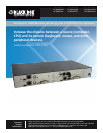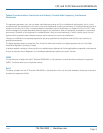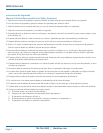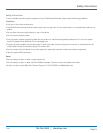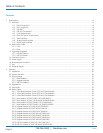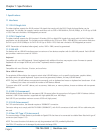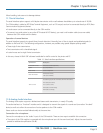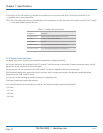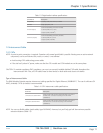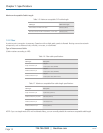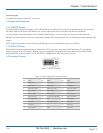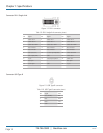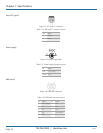
724-746-5500 | blackbox.com
724-746-5500 | blackbox.com
Page 9
ACX1MT
Chapter 1: Specifications
When handling, take care not to damage devices.
1.1.7 Serial Interface
The serial interface option supports a full-duplex transmission with a real hardware handshake up to a baud rate of 19,200.
The CON module is cabled as DTE (Data Terminal Equipment, such as CPU output) and can be connected directly to DCE (Data
Communication Equipment) devices.
• A touchscreen can be connected directly to the CON module.
• To connect to a serial printer (or any other DTE instead of DCE device), you need a null-modem cable (cross-over cable)
between the CON module and the device.
Operation of several devices:
The serial interface transmits six signals (three for each direction). Normally, four of the six signals are handshake signals (in
addition to RxD and TxD). The following configurations, however, are possible using special adapter splitting cables:
• Three single 2-wire transmissions.
• Two transmissions with a handshake signal.
• A serial mouse and a single 2-wire transmission.
In this case, choose X-ON/X-OFF software handshake for traffic control at the printer and PC.
Table 1-1. Serial interface specifications.
Specification Description
Connection Format DTE (Data Terminal Equipment)
Speed Up to 19,200 baud
Data Format Format independent
Data Transmission
• RxD (Receive Data)
• TxD (Transmit Data)
Traffic Control
The following signals are transmitted (hardware handshake):
• RTS (Request to Send)
• CTS (Clear to Send)
• DTR (Data Terminal Ready)
• DSR (Data Set Ready)
1.1.8 Analog Audio Interface
The Analog Audio option supports a bidirectional stereo audio transmission, in nearly CD quality.
The audio interface is a “line level” interface and it is designed to transmit the signals of a sound card (or another “line level”
device) as well as to allow the connection of active speakers to the CON module.
Stereo audio can be transmitted bidirectionally at the same time.
Connection of a microphone:
Connect the microphone to the “audio” input of the CON module. There are two ways to establish this connection:
• The output of the CPU module is connected with the microphone input of the sound card (red). Adjust the sound card to
provide an additional amplification (20 dB).



